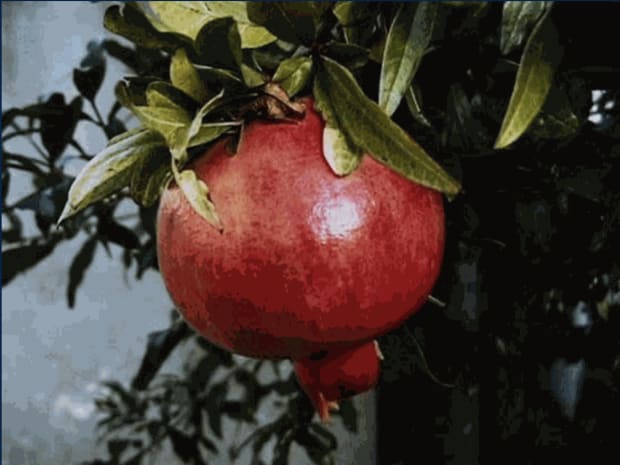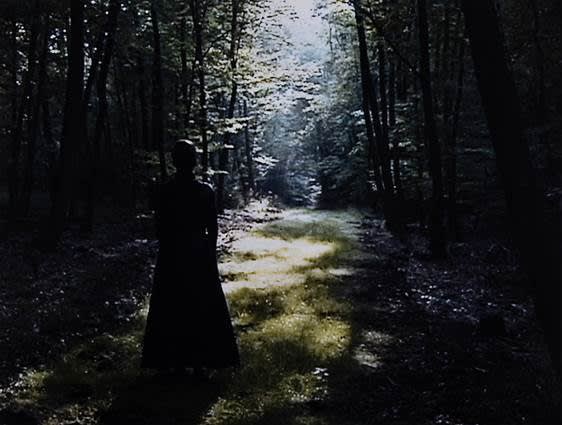-

-
When Schloss Ettersberg was renovated in preparation for the Weimar 99 cultural festival, the architect Walther Grunewald inaugurated a simple and effective act of remembrance. He ordered the clearing of the long-concealed hunting path that connects the site of Goethe's Court of the Muses to the site of the Buchenwald concentration camp. Visitors to Weimar are now able to walk from one place to the other. I was invited to make a video to be installed in a room in the Schloss Ettersberg, which would provide visitors with an occasion for reflection on the walk. As part of my research I read a number of books by Goethe, including his novel of 1809, Elective Affinities (Die Wahlverwandtschaften). When I first visited the Schloss Ettersberg and the park around it I was struck by an uncanny sense of familiarity. I then realized that I was inhabiting the topography that Goethe describes in Elective Affinities. Goethe's characters planned a utopian construction on the hill above the house:
... at home that evening they straightaway took out the new map... I would build the pavilion here, said Ottilie, laying her finger on the highest level place on the hill. You could not see the mansion, I know, for it is concealed by the little wood, but you would find yourself in a new and different world."
What was subsequently built in actuality on the hill was the Buchenwald camp. The lines from Elective Affinities are heard on the soundtrack of the video in the original German, and appeared on the wall by the entrance to the work together with translations into other languages. The video follows a woman in the dress of Goethe's time as she walks through the woods from the castle to the camp.
Victor Burgin, Components of a Practice, 2008, pp.75-77 -
-
 Victor Burgin, Study for Lichtung (seven part work), 1998
Victor Burgin, Study for Lichtung (seven part work), 1998 -
 Victor Burgin, Study for Lichtung (seven part work), 1998
Victor Burgin, Study for Lichtung (seven part work), 1998 -
 Victor Burgin, Study for Lichtung (seven part work), 1998
Victor Burgin, Study for Lichtung (seven part work), 1998 -
 Victor Burgin, Study for Lichtung (seven part work), 1998
Victor Burgin, Study for Lichtung (seven part work), 1998 -
 Victor Burgin, Study for Lichtung (seven part work), 1998
Victor Burgin, Study for Lichtung (seven part work), 1998 -
 Victor Burgin, Study for Lichtung (seven part work), 1998
Victor Burgin, Study for Lichtung (seven part work), 1998 -
 Victor Burgin, Study for Lichtung (seven part work), 1998
Victor Burgin, Study for Lichtung (seven part work), 1998
-







